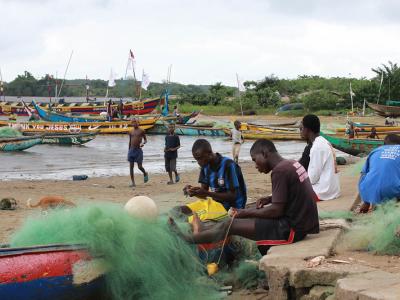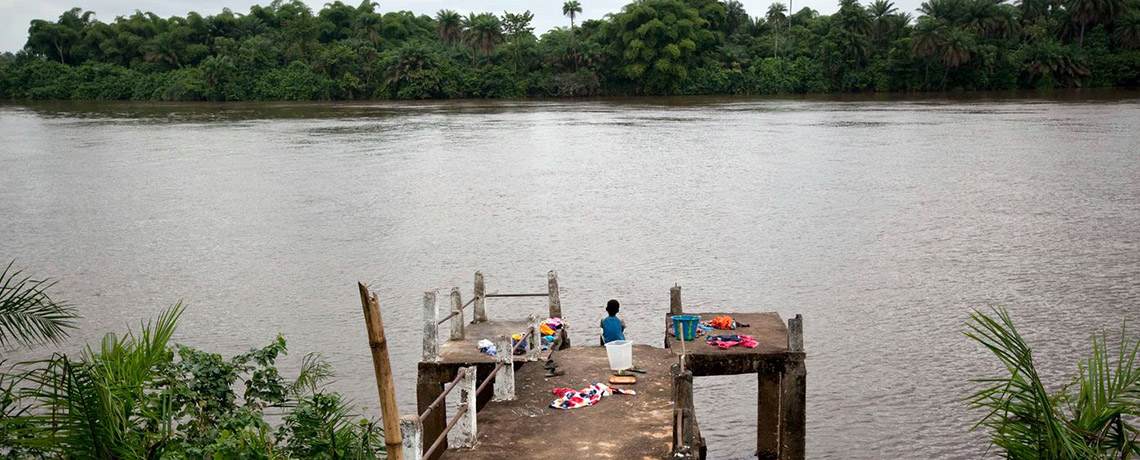
Liberia faces severe development challenges. Climate change, coastal erosion, rising seas and degraded ecosystems are exacerbating risks for communities living on Liberia's coast, derailing efforts to reach the Sustainable Development Goals and reach targets outlined in the country's Nationally Determined Contribution to the Paris Agreement.
Nearly 58 percent of Liberia’s 4 million people live within 40 miles of the coast, putting extensive pressure on coastal ecosystems for food, land, mineral extraction and other resources. This has resulted in habitat loss and degradation. Liberia is a least developed country that has recently emerged from an extended period of civil war. An estimated 64 percent of Liberians live below the poverty line, with 1.3 million living in extreme poverty. Food insecurity affects 41 percent of the population and chronic malnutrition is high. The country has also been afflicted by the outbreak of the Ebola Virus disease and COVID-19 pandemic. The economy, though recovering, is still unable to generate the large-scale employment opportunities essential for absorbing a large pool of unemployed and underemployed young men and women, and the majority of the country’s population is directly dependent on natural resources for their livelihoods.
The project Enhancing the resilience of vulnerable coastal communities in Sinoe County of Liberia builds on previous and ongoing climate resilience projects to localize climate change adaptation actions. The project supports the resilience of 80,000 beneficiaries in coastal communities and will protect, restore and rehabilitate 20,000 hectares of degraded coastal habitats. In developing small, micro, and medium enterprises, the project supports business development and training programmes for 70,000 beneficiaries, with targeted approaches for women and youth. The project also targets 30,000 beneficiaries who will benefit from integrated farming systems, fisheries and compressed stabilized 'earth blocks' and their value chains.
The project works toward transformational change by moving away from a 'business-as-usual' model to an integrated approach that combines nature-based interventions, hard infrastructure, gender-responsive approaches, capacity, policy, knowledge and information and observational management systems. It enhances coastal resilience to storms, coastal erosion and flooding risks while supporting a range of ecosystem service benefits to support livelihood security and overall climate resilience. These supports will benefit other coastal counties around the country in sea and river defense risk management as well as support for climate adaptation livelihood opportunities.
In building livelihoods and working toward the Sustainable Development Goals, the project enhances entrepreneurial initiatives that build climate resilience, especially those in other value chains such as fisheries and fuelwood, to open up opportunities for women's involvement. At the local level, new technologies in combination with traditional technologies are promoted through the project to ensure that productivity and sustainability of livelihoods are maintained. These adaptation actions and associated technologies or practices will build on the natural resilience and innovativeness of Liberian communities to build their self-reliance and capacity to continue the adaptive process iteratively. Adaptation strategies such as coastal ecosystem-based adaptation solutions, participatory sea and river defense planning approaches, climate-smart integrated farming systems, coastal protected area establishment and diversification of livelihood options will be delivered in combination.
- Community
- District
- Country Office
- Local Governments
- National Governments
- United Nations Development Programme (UNDP)
- Government of Liberia
- Global Environment Facility (GEF)
- United Nations Development Programme (UNDP)
Expected outcomes
Outcome 1: Capacity of all coastal counties’ planning institutions to assess climate change risks and to consider into County Development Agendas strengthened
Outcome 2: Innovative technologies to support coastal adaptation introduced, including response planning and communication mechanisms
Outcome 3: Reduced vulnerability of Sinoe County coastal communities to climate-induced sea level rise impacts through hybrid solutions (nature-based and engineering)
Outcome 4: Gender-responsive options for climate-resilient income and livelihood diversification introduced to climate-vulnerable communities in coastal counties
- Image
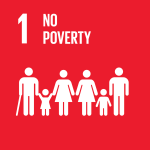
- Image

- Image
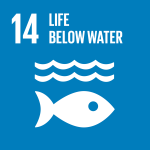
- Image
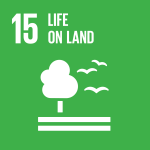
The Republic of Liberia has a 565-km-long coastline and claims an economic zone of 13 nautical miles and a territorial zone of 370 km. About 90 percent of the coastline consists of a narrow sand beach 20-25 meters wide, reaching 60-80 meters in some parts of southeastern Liberia, interspersed with lagoons. The coastal area consists of swamp-related vegetation, including mangroves forests and reeds that extend up to 25 miles inland. Mangroves provide important breeding and nursery areas for many West African marine species of fish, crab, shrimp and mollusks and hence deforestation of mangroves is having a direct impact on fish stock.
The country is faced with continued severe development challenges. Nearly 58 percent of Liberia’s 4 million people live within 40 miles of the coast, which puts extensive pressure on coastal ecosystems for food, land, mineral extraction and other resources, resulting in habitat loss and degradation. Populations continue to grow, and new infrastructure (e.g. roads and housing), while desperately needed, will only add additional pressure and increase ecosystem degradation.
Liberia is a least developed country that has recently emerged from an extended period of civil war. It has struggled through two civil wars, one from 1989-1996 and the second from 1999-2003. An estimated 64 percent of Liberians live below the poverty line, of whom 1.3 million live in extreme poverty. Food insecurity affects 41 percent of the population and chronic malnutrition is high. Many people were displaced from their homes during the war and have only recently returned. The war had a devastating impact on the country’s health and education systems and a large portion of the population is illiterate. The country has also been afflicted by the outbreak of the Ebola Virus disease. The economy, though recovering, is still unable to generate the large-scale employment opportunities essential for absorbing a large pool of unemployed and underemployed young men and women. The majority of the country’s population is directly dependent on natural resources for their livelihoods.
Climate projections show a slight increase of total precipitation and a longer Sahelian rainy season (2–3 days per decade) with drier phases within. In a “business as usual” world, most countries in West Africa will have to cope with less predictable rainy seasons, generalized torrid, arid and semi-arid conditions, longer dry spells and more intense extreme precipitations resulting in flash floods. Such conditions can produce significant stresses on agricultural activities, water resources management, ecosystem services, urban areas planning and coastal processes. Liberia is vulnerable to the impacts of climate variability and change, such as warmer temperatures, changes in precipitation patterns, particularly, increases in the frequency of extreme rainfall events. These climate change impacts present challenges to the country’s socio-economic development. The best estimate of the impact of future climate conditions on temperature is provided by the overall ensemble mean of 16 climate models across 3 emission scenarios which suggests that Monrovia will warm by 1.92°C by 2050 and 2.65°C by 2080 during the dry season (1.61°C by 2050 and 2.60°C by 2080 during the wet season). Regardless of emission scenario, the Atmosphere-Ocean Global Climate Models (AOGCMs) are quite consistent in predicting warmer conditions throughout all of Liberia. Projected precipitation changes in Monrovia range from 36 percent decreases to 21 percent increases in wet season rainfall. The overall ensemble prediction across emission scenarios gives a slight increase in wet season rainfall of 1.54 percent by 2050 and 1.92 percent by 2080. The increased rainfall appears to occur mostly during the early months of the rainy season, beginning in the southeast in May and extending west along the coast in June and July, implying more intense rainfall events (Stanturf et al. 2013). General trends of projected temperature and precipitation changes for 2050 and 2080 are into direction for a warmer and wetter climate in most of the country and especially in the coastal zone.
About 90 percent of Liberia’s coastline consists of a narrow sand beach 20-30 meters wide, reaching 60-80 meters in some parts of eastern Liberia. Climate projections under Representative Concentration Pathway (RCP) 8.5 predict a sea-level rise (SLR) of 75 cm by 2100 along Liberia’s coast, as well as an increase in the frequency of high-intensity storms resulting in an increased offshore significant wave height. The combined effect of these climate impacts will rapidly increase the rate of beach and coastal erosion, storm surge inundation and coastal/fluvial flooding in Sinoe County, threatening local populations and coastal infrastructure. The climate at Sinoe County is similar to most of southern Liberia, which is strongly influenced by the coastal zone, which gives rise to wet and dry seasons. The long wet season usually runs from April to October and the dry season from October to April when ±90 percent of the rainfall occurs. Climate change will impact vulnerable coastal communities in Liberia through: i) degradation of the mangrove ecosystems on which their livelihoods and food security depend ; and ii) inundation of vital infrastructure such as boat-launch sites, dwellings and socio-economic spaces and amenities such as fish markets.
The coastal hazards in Liberia can be generalized by change in two major aspects: change in water level and change in land area. The change in water level can be due to sea/wave action, local tidal variations, current patterns, flooding from rivers and/or combination of those. The change in land area can be due to erosion (or accretion) in the coastal area. These factors lead to a situation where the coastal area is prone to hazards like flooding and erosion. The coast is exposed and dominated, throughout the year, by consistent patterns of long period low to moderate energy swell waves originating from storms a long distance away in the Atlantic Ocean. Therefore, swell waves, with longer periods, can pack a lot more energy than locally generated waves.
About 17 percent of the coastal area is built-up area, under plantation or under some sort of agriculture - all three categories specifically having extremely low resilience. Similarly, great proportion, about 62 percent, of the coastal area is under some type of economically and biodiversity valuable forests and mangroves (with highly valuable ecosystem services) and thus raising the overall vulnerability of the coastal region to a medium range.
Liberia experiences continuous hazard danger coastal area with unfavourable geomorphology and exposure to unobstructed forces of Atlantic Ocean swell waves. Each of the coastal counties has a history of recurring natural hazards. Coastal districts towns are often exposed to flooding and erosion has already swept large number of houses through the years and along the entire coast of Liberia. Along with reviewing Liberia’s disaster profile, understanding the management of risks at national and county level turn out to be obligatory. Recent natural climatic events in Liberia and the increased frequency and magnitude of hazards such as floods and sea erosion have given the impetus for a National Disaster Risk Management Policy for Liberia (2012). This impetus is also driven by a need to reduce the risks related to these hazards as a result of high vulnerability from over fourteen years of war, poverty and low human and physical capacity. Additionally, the risk of economic, social and environmental losses is high, also given the high pressure on resources in areas with a high concentration of population. The coastal areas of Liberia are therefore particularly vulnerable to climate change and its effect on the coast is now becoming clearly evident. This vulnerability is increased where communities are located close to river flood hazard areas (river mouths, swamp areas or wetlands) in light of increasing precipitation predictions for the country coupled with poor land drainage strategies.
Almost 90 percent of the national population is living at risk of flooding from the sea, river system, swampland and clogged drains. In fact, as stated within the National Disaster Risk Management Policy (2012), in 2007, floods affected over 22,000 people in Liberia with the majority or those affected living in the coastal zone or close to the mouths of rivers (estuary areas). More recently, and according to National Disaster Management Agency (NDMA), 2019 floods are reportedly affecting 8,000 people in three coastal counties (including Sinoe County) which increased to 60, 000 people in July 2019.
One of the most serious threats to the coastline and marine environment are solid waste, beach sand mining (unregulated sand mining is causing slight embayment of the shoreline due to localized recession) and beach erosion (causing shoreline recession in some cities such as Greenville in Sinoe County). The continuing pressures of high population densities, poor resource extraction techniques and rapid economic development in or near pristine and vulnerable areas, are further degrading natural coastal infrastructure. Added to these threats are climatic pressures, which have emerged as significant and real risks to the integrity and productivity of these coastal ecosystems. Given that many of the ecosystem services that coastal communities rely on also help them to adapt to climate change, it is important to promote resilient coastal ecosystems to reduce climate stresses, especially in countries with high biodiversity and ample vegetation options. There are currently no alternatives on offer to use other sources of sand (except for beach sand) to help the construction industry for coastal communities and to improve farming strategies that diversify crop rotation production, planting regimes and diversity of crop are offered.
Sinoe is one of Liberia's 15 counties, and has been identified as one of the coastal counties most affected by climate change, and thus an adaptation priority for government. Sinoe, unlike many other counties in Liberia, is undergoing significant social, economic and environmental changes. Palm oil and logging operations are increasing in the area. Wages and labour is considerably low in many villages of Sinoe County with some contribution from government civil service, artisanal mining and harvesting of redundant oil palm.
Liberia’s National Biodiversity Strategy and Action Plan, articulates that Greenville, in particular, is experiencing coastal erosion due to uncontrolled exploitation of the natural resources and other human activities. These pressures are being exacerbated by climate change and in particular the increasing risk of increasing rainfall precipitation coupled with poor land management practices.
Project overview
Building on previous and on-going projects, particularly the GCF-funded project “Advance the NAPs process for medium term investment planning in climate-sensitive sectors (i.e. agriculture, energy, waste management, forestry and health) and coastal areas in Liberia” this project will localize climate change adaptation action and policy at the level in coastal counties, with a specific focus on Sinoe County. The project proposed is designed to move away from the “business-as-usual” model of adapting to climate change towards one that is more integrated, with a focus on Sinoe County for a combination of nature-based interventions, hard infrastructure, capacity, policy, knowledge and information and observational management systems that will benefit other coastal counties around the country on sea and river defense risk management and supporting climate adaptation livelihood opportunities.
This change is needed as up to now, coastal erosion and flood risk in Liberia has been mostly addressed through the use of standard civil engineering measures (i.e. rockfill revetments and small structures made with timber and old tires). These have worked to a large extent, with effectiveness related to the quality of design and construction.
A new approach is now however required to resolve these new integrated problems associated with climate change. A combination of tools and approaches are presented within this LDCF-financed project, combining “hybrid” intervention measures (a combination of nature-based, hard and non-structural interventions) with improved policy and regulatory setting, gender responsive livelihood opportunity setting and enhanced capacity development, training and outreach actions to help enhance coastal resilience to storm, coastal erosion and flooding risks whilst supporting a range of ecosystem service benefits. These tools shall be used in combination with landscape management and monitoring systems that provide the environmental and social benefits required to support livelihood security and build climate resilience.
The project will apply integration and innovation approaches to better address climate change risks through sea and river defense management in Liberia. It will also use data generated from, and implement the outcomes of the GCF-funded readiness project which is under implementation in Liberia. The GCF-finaced project will provide critical data on Liberia’s coastal climate risks, hazards and vulnerability as well as adaptation options for different coastal counties. The initiation and implementation of innovative adaptation solutions through sea and river defense planning, adoption of private sector new alternative business models linked to infrastructure techniques for integrated farming practices coupled with encouragement for community entrepreneurship will be considered in the project to reduce climate vulnerability and build resilience. Importantly, the approach shall seek to open the space for other entrepreneurial initiatives that build climate resilience, especially those in other value chains such as fisheries, fuelwood, which will open up opportunities for women’s involvement.
The project will focus on coastal communities within Sinoe County to support integrated coastal adaptation practices for a number of coastal settlements within the County though with the capacity for the project outcomes to benefit other coastal counties in Liberia, while building institutional capacities and policy mainstreaming for Integrated Coastal Zone Management across all coastal counties. The project will therefore seek to empower communities and institutions to better plan and implement coastal adaptation interventions in a deliberate and proactive manner, reducing reliance on the Government of Liberia (GoL) to help provide already scarce resources for climate change adaptation solutions. Building community self-reliance and by providing a community planning focus (with new livelihood alternatives) will enable them to tailor adaptation tools and technologies to their specific needs. It will also build the capacities of the administrations of other coastal counties to design and implement integrated coastal adaptation plans.
At the local level, new technologies in combination with traditional technologies will be promoted to ensure that productivity and sustainability of livelihoods are maintained. These adaptation actions and associated technologies or practices will build on the natural resilience and innovativeness of Liberian communities to build their self-reliance and capacity to continue the adaptive process iteratively. Such adaptation strategies such as coastal ecosystem based adaptation solutions, participatory sea and river defense planning approaches, climate-smart integrated farming systems, coastal protected area establishment and diversification of livelihood options are all in combination critical elements for a long-term adaptation solution in the context of risks and vulnerabilities of Sinoe County. The project shall also seek to learn and upscale some of the well-tested practices that are being undertaken to support community benefit-sharing mechanisms (CBSM) in forest ecosystems for the Production-Protection Approach project of IDH in Sinoe county (2017) which is based on best practices of operational CBSM in Liberia.
Finally, of major concern is the apparent lack of strategic delivery of a sustainable and strategic sea and river defense risk management approach policy to address these concerns. Coastal protection and sea defense structures are currently not planned with regard to their purpose, their outcome and importantly, their long term maintenance costs. Despite the professional efforts of the Ministry of Mines and Energy (MoME) and the Environment Protection Agency (EPA) to address the problems being faced, the approach to shore protection (at present) is reactionary and not anticipatory without long term national planning mechanisms in place.
The preferred solution to the above-mentioned climate hazards is to build long term resilience in coastal Liberia through an integrated approach that involves integration of climate change risks into planning and budgeting, diversifying livelihoods in coastal counties, adopting and financing climate resilient business practices and protecting communities and assets affected by climate hazards such as coastal erosion and flooding. Given the extent of the Liberian coastal zone, an ideal solution would be to create county level and national frameworks that enable and promote investments by a wide variety of actors in the public and private sectors while attending to the immediate needs of the most vulnerable communities.
Given the prioritization of Sinoe county among the different counties, the preferred solution is to: i) protect highly exposed and vulnerable areas of Sinoe County coastline from accelerated coastal erosion, flooding and SLR through the establishment of low impact “hybrid” solutions that embrace the importance of both coastal, estuarine and fluvial systems and associated communities; ii) implement climate-responsive planning through adopting an integrated planning approach in Liberia’s coastal counties; and iii) secure the livelihoods of vulnerable communities who rely on the coastal and riverine areas through the provision of livelihood alternatives that enable them to adapt to climate change and build their resilience (including resource efficient enterprises and technologies such as Compressed Earth Block Stabilisation (CSEB), value chain enhancements,) and through the more effective use of farmlands (Integrated Farming Systems). Due to the complexity of the coastal system (ecological and socio-economic linkages) continuous monitoring, involving affected stakeholders, including local communities, of the short and long term climatic, socio-economic and environmental changes taking place to inform planning is also part of the preferred solution. These will be accomplished by working with public and private sector actors in business and finance (including SMMEs).
-
Outcome 1: Capacity of all coastal counties’ planning institutions to assess climate change risks and to consider into County Development Agendas strengthened
1.1: County level ICZM Plans prepared for all coastal counties to address climate hazard risks on infrastructure, livelihoods, health, and enable adaptation planning and monitoring, protection and maintenance of sea/river defense.
1.2: Identified climate-related risks and adaptation priorities are incorporated into Coastal County Development Agendas, and incorporated into county and national planning and budgeting processes.
1.3: Cross-sectoral climate change information and risk focal points and working groups established and trained for all coastal counties.
Outcome 2: Innovative technologies to support coastal adaptation introduced, including response planning and communication mechanisms
2.1: Coastal flood and erosion early warning and risk management systems supported to provide climate information, products and services that meet the needs of end-users.
2.2: County level knowledge hubs to collect and disseminate lessons learned on sea and river defense information to support ICZM supported in all coastal counties, based on Sinoe pilot.
2.3: Community Action Plans developed and implemented in all districts of Sinoe County (informed by adaptation options developed under NAPs project, encouraging coastal communities to adopt new practices and adopt new livelihood opportunities to embrace new adaptation to sea level rise risks).
2.4: Guidance manuals for integrated coastal adaptation practices developed and disseminated to all coastal and riverine counties.
Outcome 3: Reduced vulnerability of Sinoe County coastal communities to climate-induced sea level rise impacts through hybrid solutions (nature-based and engineering)
3.1: Viable solutions to address climate vulnerabilities in Sinoe County developed and designed using multi-criteria and processes for identifying, prioritizing and planning adaptation and resilience solutions, in consultation with local stakeholders.
3.2: Coastal and catchment level adaptation solutions implemented to improve resilience of communities to the impacts of climate change in Sinoe County, targeting 80,000 beneficiaries and 20,000 hectares
3.3: Best practices on adaptation solutions documented and disseminated to other coastal counties for adoption and scaling up including through the engagement of private sector.
Outcome 4: Gender-responsive options for climate-resilient income and livelihood diversification introduced to climate-vulnerable communities in coastal counties
4.1: Business identification, development and management training programmes designed and delivered to communities and Small Micro and Medium Enterprises in coastal counties targeting youths and women’s groups targeting 70,000 beneficiaries.
4.2: Integrated Farming Systems, Fisheries and Compressed Stabilized Earth Blocks and their value chains – opportunities for coastal communities are created and implemented targeting 30,000 beneficiaries.
4.3: Access to finance and technologies to develop livelihood and income diversification enterprises of coastal livelihoods and resources facilitated in collaboration with national and county financial institutions.
- Muyeye ChambweraRegional Technical Advisor




